site search
online catalog
CAPTURED AND RE-CAPTURED FIRST MODEL JOSLYN CARBINE. THE CAPTOR WAS THEN KILLED AT MISSIONARY RIDGE

Hover to zoom

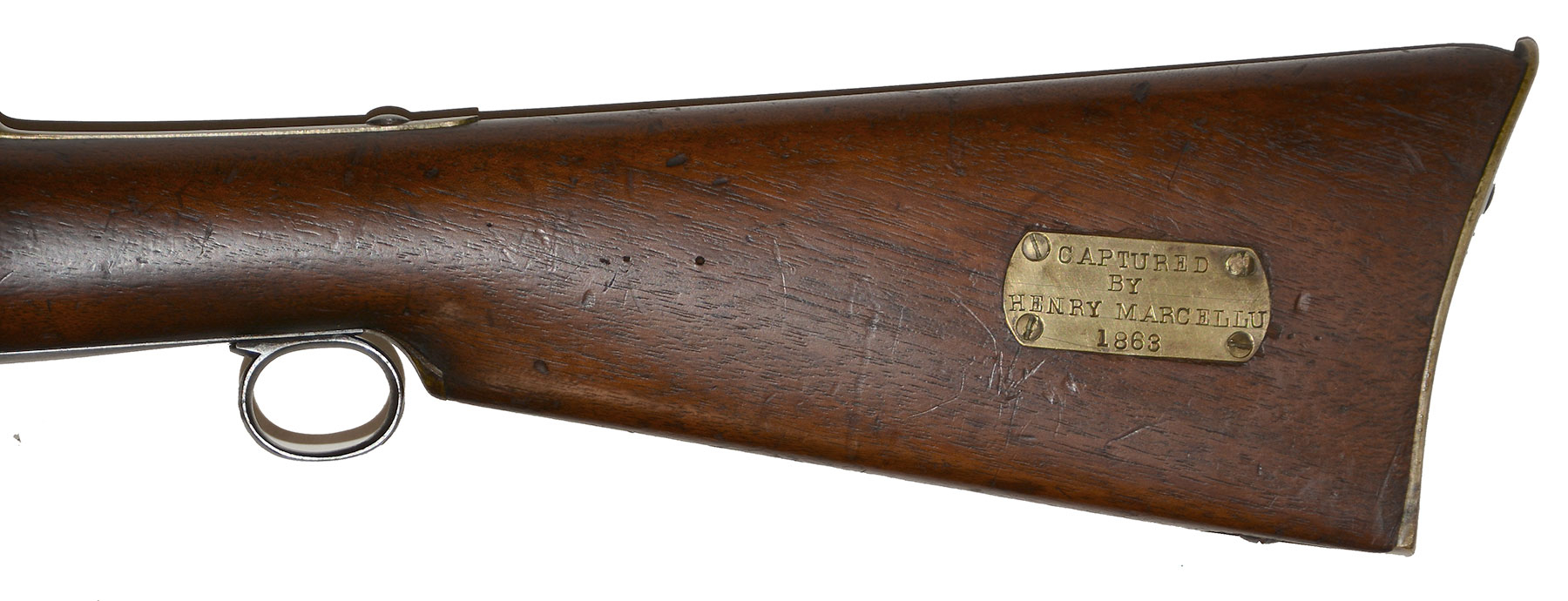

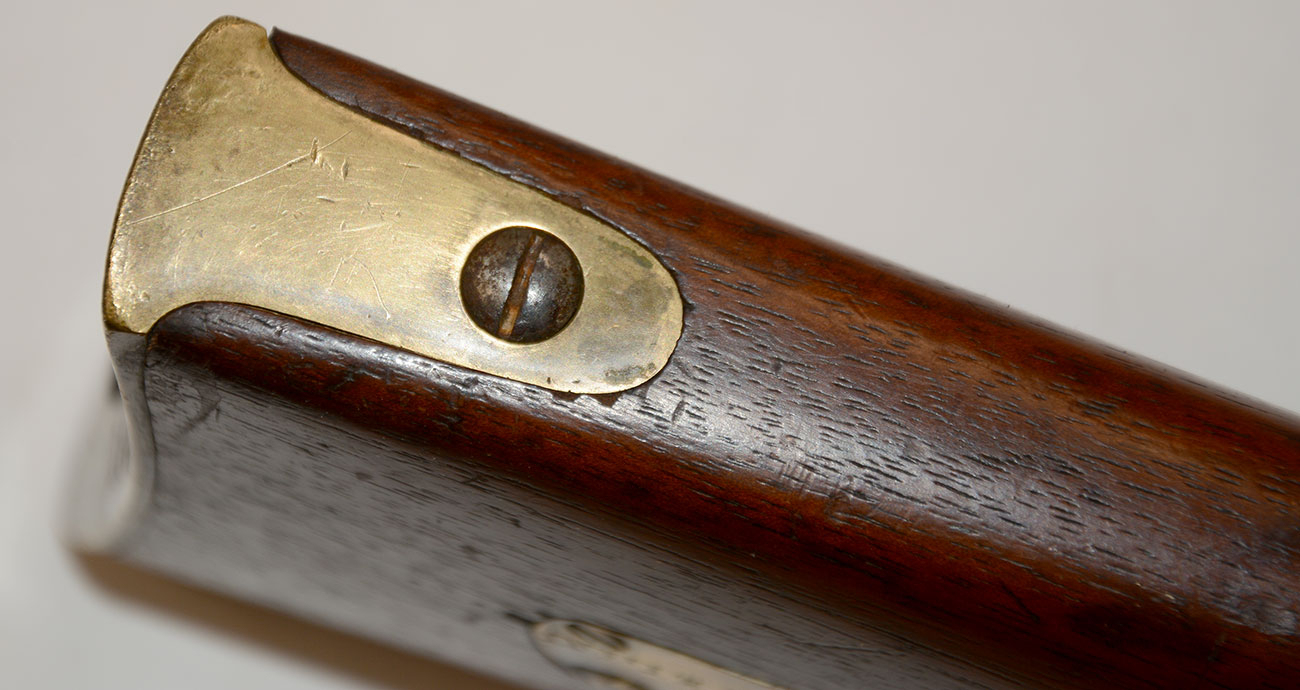

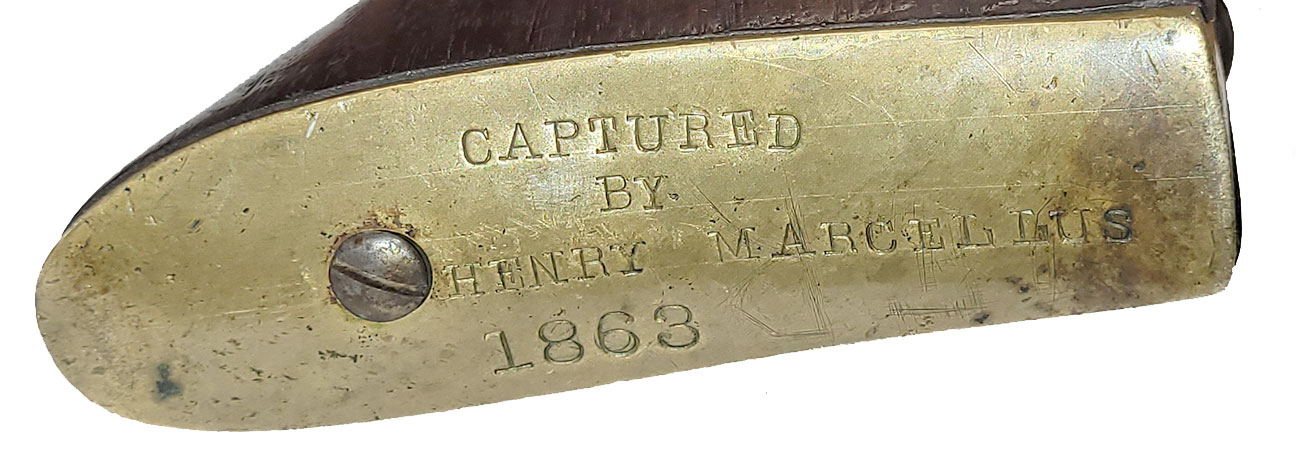
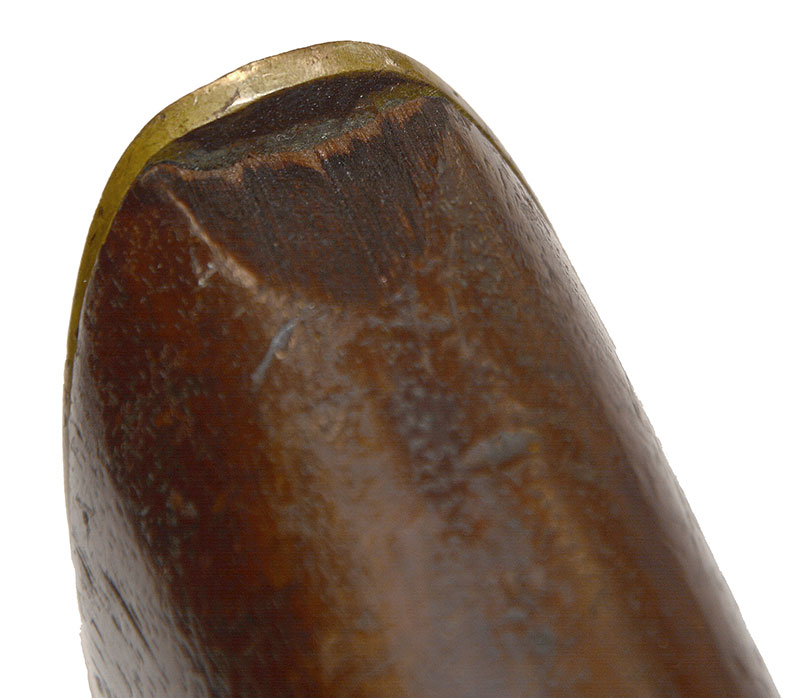
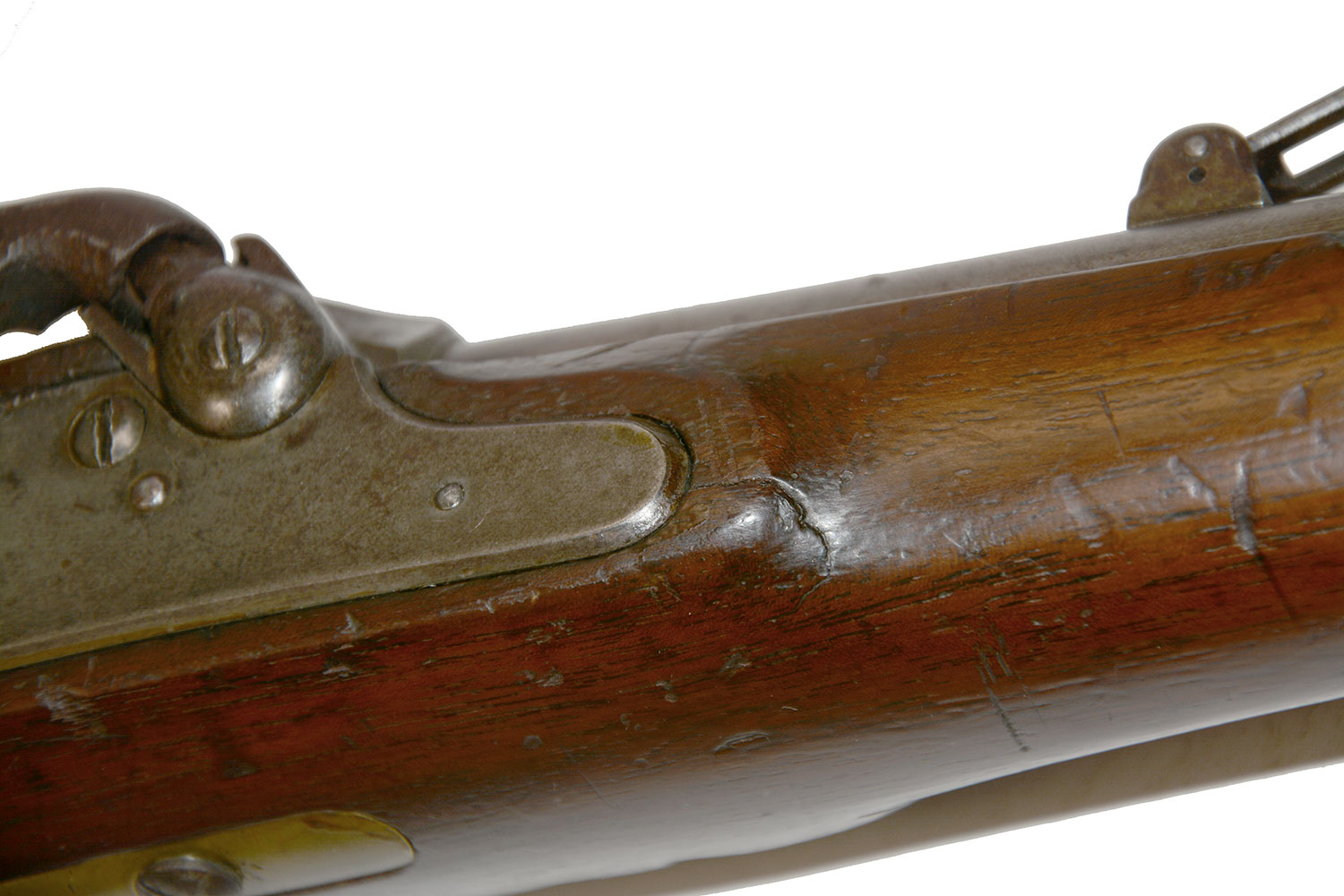
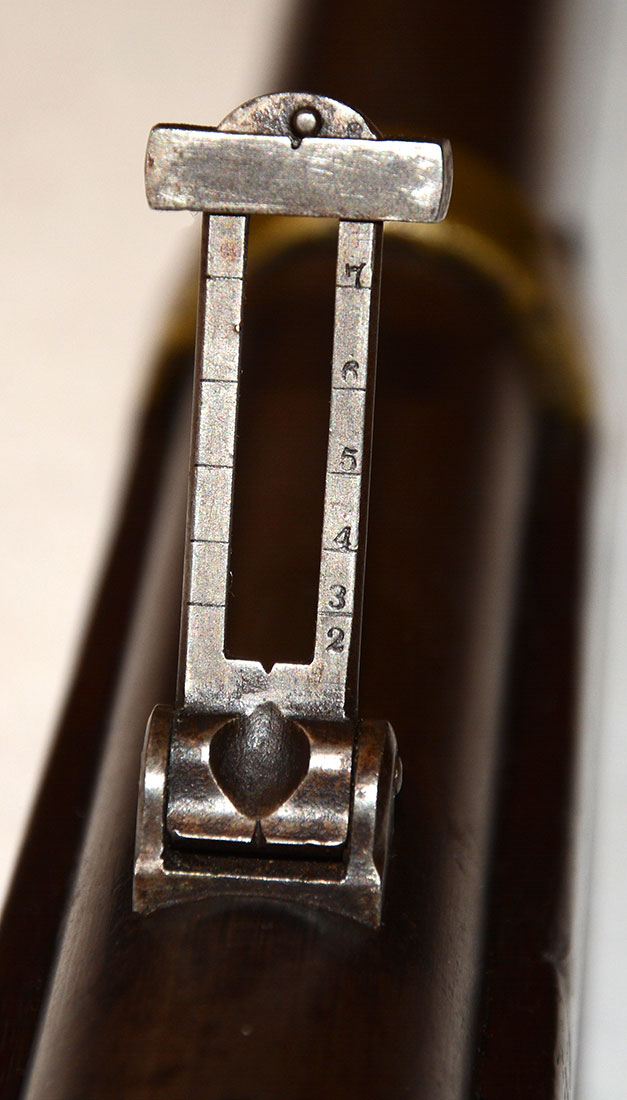

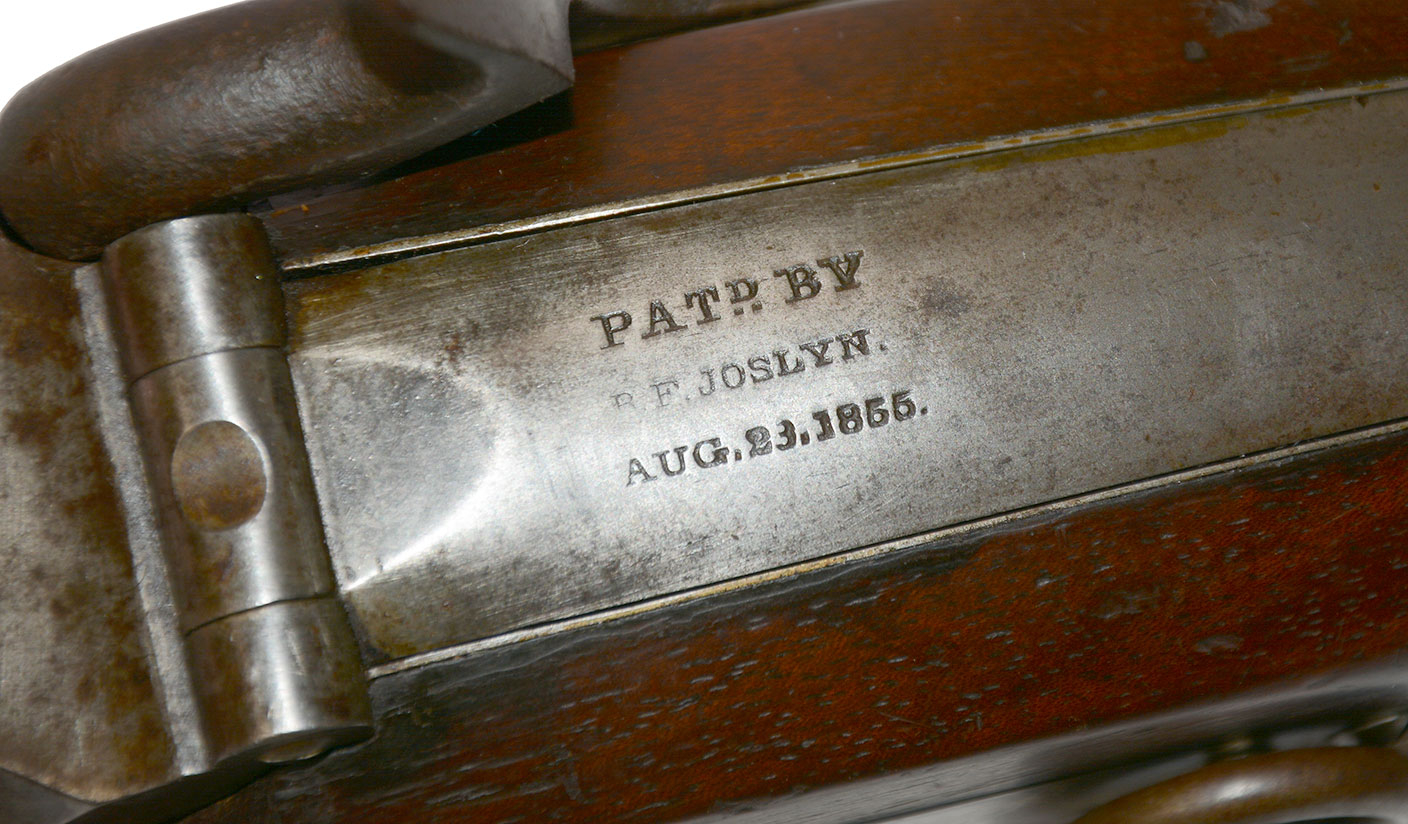

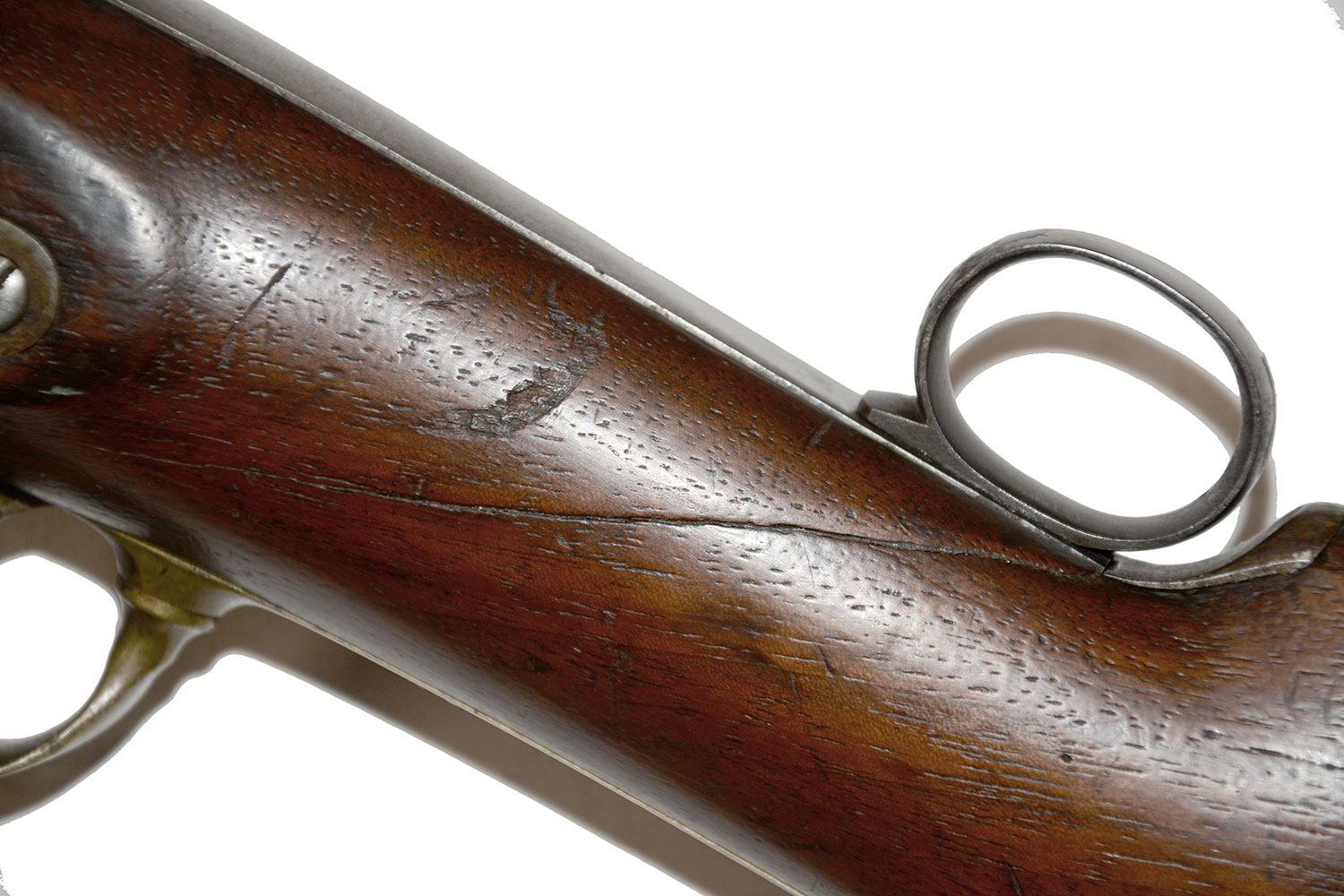
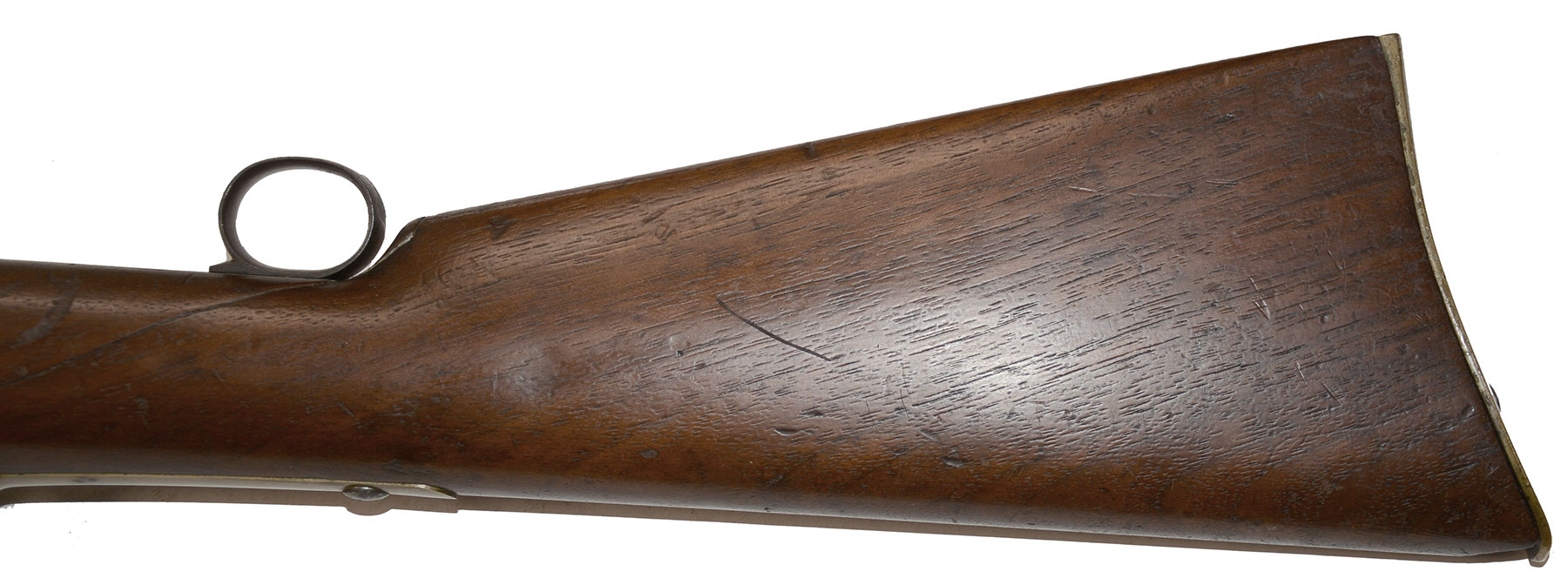

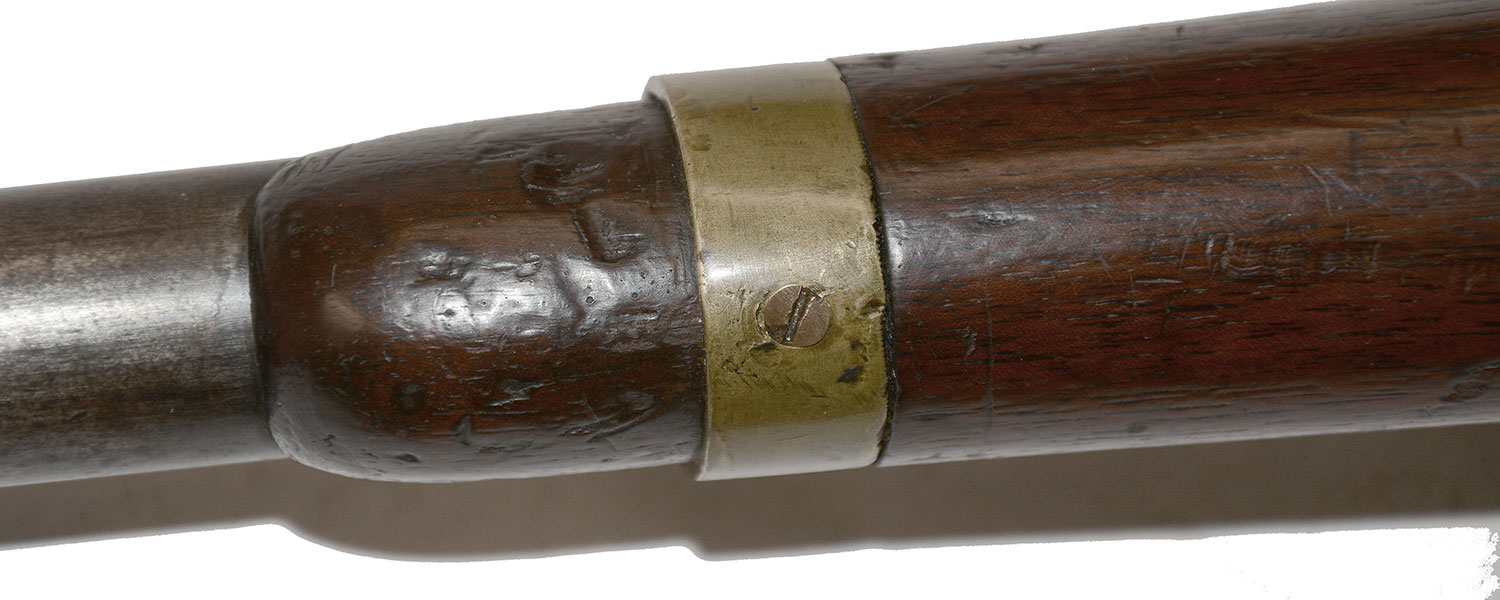
$5,500.00 SOLD
Quantity Available: None
Item Code: 1268-398
This is a rare US Model 1855 Joslyn carbine known today by collectors as the "Monkey Tail" carbine. In 1855 B. F. Joslyn received his first firearms related patent for a percussion breechloading carbine. The carbine was .54 caliber and utilized a combustible nitrated paper cartridge. Pushing a large oval ring at the rear of the action forward unlocked the breech lever and allowed it to be swung forward and upward, actuating the breech loading mechanism and exposing the breech for loading. A fixed plunger at the end of the breech lever forced the loaded charge home into the chamber when the lever was closed. A long pin at the rear of the breech lever actuated a trigger safety mechanism that locked the trigger and prevented it from releasing the hammer, even if it was cocked, while the breech was open. This system prevented accidental discharges while the breech was open and only allowed the trigger to work while the breech was securely closed.
Joslyn approached Asa H. Waters firearms company of Millbury, Massachusetts to manufacture his carbine. Waters provided experience in military arms manufacturing and a relationship with the US Ordnance Department that would be helpful to get Joslyn’s foot in the door to acquire a US military contract for his carbine. Joslyn also hired William C. Freeman of New York City to help. Freeman was well connected with the US Ordnance Department and managed to arrange for Joslyn’s design to be included in the 1857 and 1858 Army Board Trials for breechloading arms. While the Joslyn designs did not win the trials, it came in second to the Burnside design, it did well enough for Joslyn to receive an order for 1,200 carbines.
Joslyn's Model 1855 carbines were among the first breechloaders to be in the field with Union cavalry during the Civil War. The carbines seem to have seen the most field use with Ohio volunteer cavalry regiments. The 2nd, 3rd, 4th, and 6th Ohio Volunteer Cavalry who all received “Monkey Tail” carbines. With only up to 1,500 of the carbines being produced, and all seeing early hard and prolonged service they are extremely rare today in any condition. Any extant example is an extremely rare and highly prized find for the US Civil War weapons collector.
The carbine is mounted in a half-length walnut stock which has a medium color and a wonderful untouched and molested with patina. On the left side wrist there is a diagonal crack running about 4 inches. This has been internally stabilized and does not affect the soundness of the weapon nor actually the appearance it is a result of stress and age. There is a chip of wood gone from the heal of the butt plate area, but this happened contemporaneously with the carbines use. A sling bar and a ring are mounted on the flat, opposite the lock, to facilitate carry by cavalry. The unmarked, as made, lock plate the breech and the lever mechanism were all originally color casehardened while the barrel was browned or blued but now all these surfaces have a mellow gun metal gray color mixed with a mottling of age brown. There is no surface rust or pitting on these metal surfaces, The brass furniture consists of the trigger guard, butt plate and barrel band. The rear sight was a flip up adjustable ladder with a fixed notch for use as a quick acquisition sight when it was in the down position and a sliding elevation bar to adjust the sight for longer distances when the ladder was flipped up. The sight was dovetailed into the top of the barrel. The sight was similar to those used on some early Sharps rifles and carbines. A large iron "pinched" front sight was mounted on top of the barrel about a half inch from the muzzle. On the top of the lever or "monkey tail" is stamped: "PATd BY" over "B.F. JOSLYN" over " AUG, 23, 1855.". The .54 caliber bore is brilliant with great rifling. The lock functions perfectly. All major components, lock, stock and barrel, have the matching serial number "512". The serial number is stamped on the components interiorly but is exposed on the right of the monkey tail lever when raised. There are no replaced parts whatso-ever. The look is that of an arm one expects to see on display in the best museum or top collection.
HISTORY. There is little doubt that this weapon was initially captured early in the war by the Confederates from an Ohio cavalry regiment. The 2nd, 3rd, or 4th regiments were in combat early in the war, fought west of the Mississippi and carried 1855 Joslyn carbines. This is significant because the carbine was re-captured west of the Mississippi by Henry Marcellus of the 26th Ohio Infantry (Battle Unit Details - The Civil War (U.S. National Park Service). Inset in the right butt stock is a brass plaque and deeply stamped on the rear of the butt plate are period inscriptions that tell us the history of this wonderful combat captured trophy of the Civil War. The sheet brass lozenge shaped plaque inset in the stock measures 2 1/4 inches by 1 inch. It is deeply stamped in upright capital letters: "CAPTURED" over "BY" over "HENRY MARCELLU (sic)" over "1863". The letter font used is distinctively 19th century and earlier. It is clear that the stamping was done after the plaque, held by 3 screws and one brass tack, was already inset and the person doing the job did not calculate spacing properly there by having to drop the "S" on Marcellus. The plaque is upside-down if the carbine is displayed in the conventional way but back in the day it was often the practice to hang and display firearms with the barrels in a horizontal upside-down position. In addition to this plaque the butt plate is deeply stamped: "CAPTURED" over "BY" over "HENRY MARCELLUS" over "1863". Henry Marcellus enlisted in the 26th Ohio Infantry in 1861 at the age of 19 and soon rose to the rank of corporal. His service was that of the regiment's until his death at Missionary Ridge on November 23rd of 1863. He is today buried at the Chattanooga National Cemetery. Marcellus was involved in 2 campaigns in 1863. It is probable that he captured this carbine in the Tullahoma Campaign of 1863 where Confederate cavalry, including N.B. Forrest's command, was active in harassing both Northern cavalry and infantry (Tullahoma Campaign). It is also not impossible that despite the Union route he may have captured this carbine at Chickamauga but getting it sent home when under siege was problematic. More research may pinpoint the exact action or campaign in which this wonderfully historic arm was captured. Proudly displayed for years in Mr. Ray Richey's Fort Worth museum this can now be yours. [pe][ph:L]
DISCLAIMER: All firearms are sold as collector's items only - we do not accept responsibility as to the shooting safety or reliability of any antique firearm. All firearms are described as accurately as possible, given the restraints of a catalog listing length. We want satisfied customers & often "under" describe the weapons. Any city or state regulations regarding owning antique firearms are the responsibility of the purchaser. All firearms are "mechanically perfect" unless noted, but again, are NOT warranted as safe to fire!
~~~~~~~~~~~~~~~~~~~~~~~~~~~~~~~~~~~
THIS ITEM, AS WITH ALL OTHER ITEMS AVAILABLE ON OUR WEB SITE,
MAY BE PURCHASED THROUGH OUR LAYAWAY PROGRAM.
CLICK HERE FOR OUR POLICIES AND TERMS.
THANK YOU!
Inquire About CAPTURED AND RE-CAPTURED FIRST MODEL JOSLYN CARBINE. THE CAPTOR WAS THEN KILLED AT MISSIONARY RIDGE
Most Popular
Historical Firearms Stolen From The National Civil War Museum In Harrisburg, Pa »
Theft From Gravesite Of Gen. John Reynolds »
Selection Of Unframed Prints By Don Troiani »
Fine Condition Brass Infantry Bugle Insignia »
featured item
ONE OF GENERAL PHILIP SHERIDAN'S SWORDS
This sword of General Philip Sheridan was presented by him personally to Thomas Donaldson, of The Smithsonian Institution. The German imported sword was owned by General Sheridan early in his career when he was serving as an Infantry officer. It is… (1268-373). Learn More »


